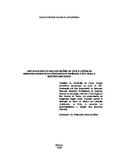Diagnóstico rural participativo e plano de ações sustentáveis: o caso da comunidade indígena Catu

Visualizar/
Data
2019-06-27Autor
Filgueira, Paulo Victor da Silva
http://lattes.cnpq.br/7717794807165308
Metadado
Mostrar registro completoResumo
Strategies developed to improve the lives of people in indigenous communities
have not worked when they are created without dialogue with these communities.
For this reason, this research aims to analyze the living conditions of Catu indigenous
community, located between Goianinha city and Canguaretama city, in the State ofRio Grande
do Norte, to create more effective strategies adapted to this community. This research is
classified as qualitative, because it seeks the subjective understanding of indigenous peoplcs
using, for this, Participatory Rural Diagnosis. It is also exploratory and descriptive. The result
of the research provided a diagnosis and action plan more adapted to the reality of this
indigenous community and its surroundings, since the community participated actively through
texting, illustrations and reporting about their way of life, culture and their environment.
Analyzing the infonnation provided frorn the indigenous community we could see, as the
Community potential it's their rich cultural heritage and we can perceive that the greatest threat
to the community is the cultivation of sugar cane and the growth of urbanization around. In
short, we realize that the development of projects for this indigenous community can not be done without the dialogue with the community, because otherwise its not effective and can put
at risk the Catu indigenous community and their traditions.



